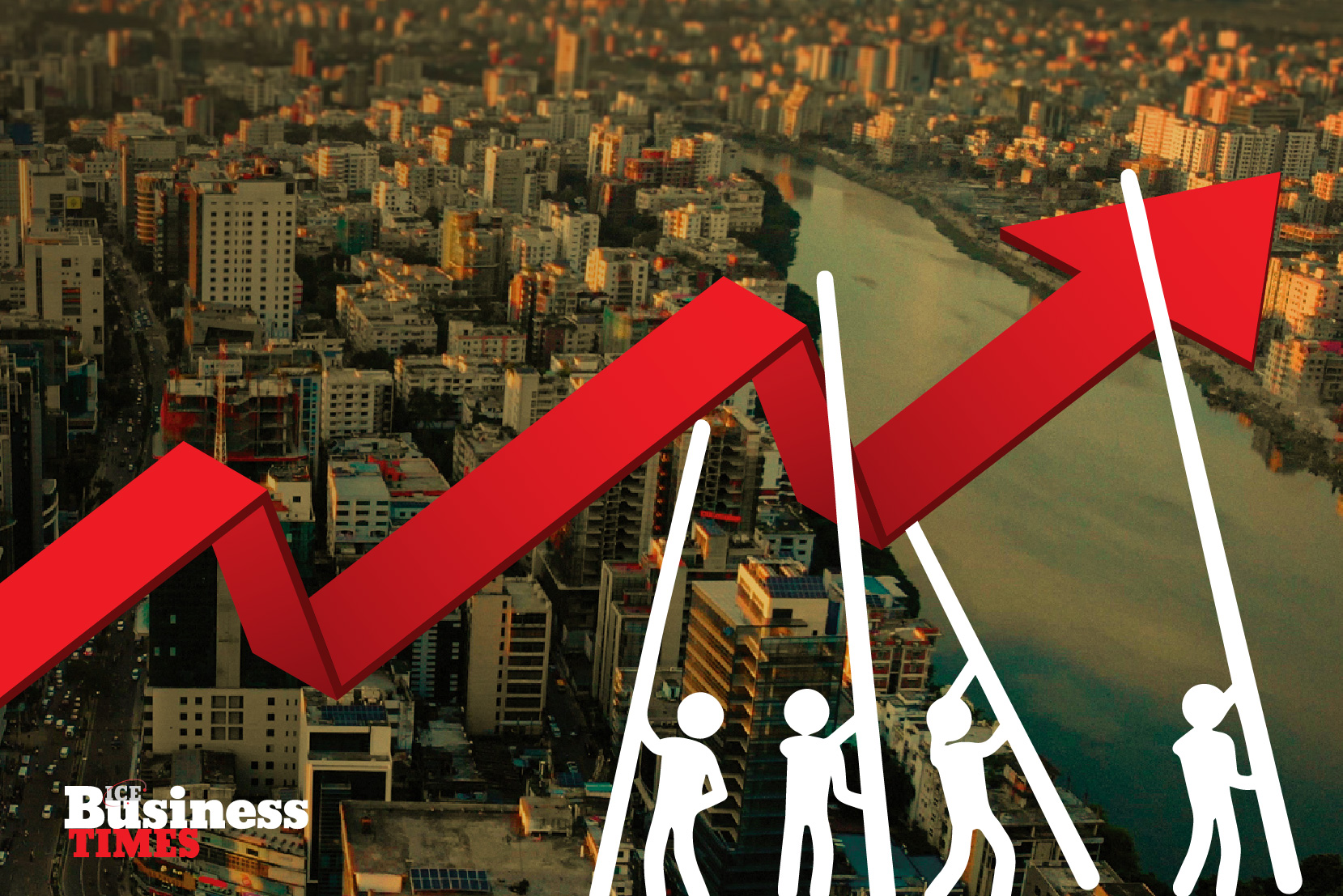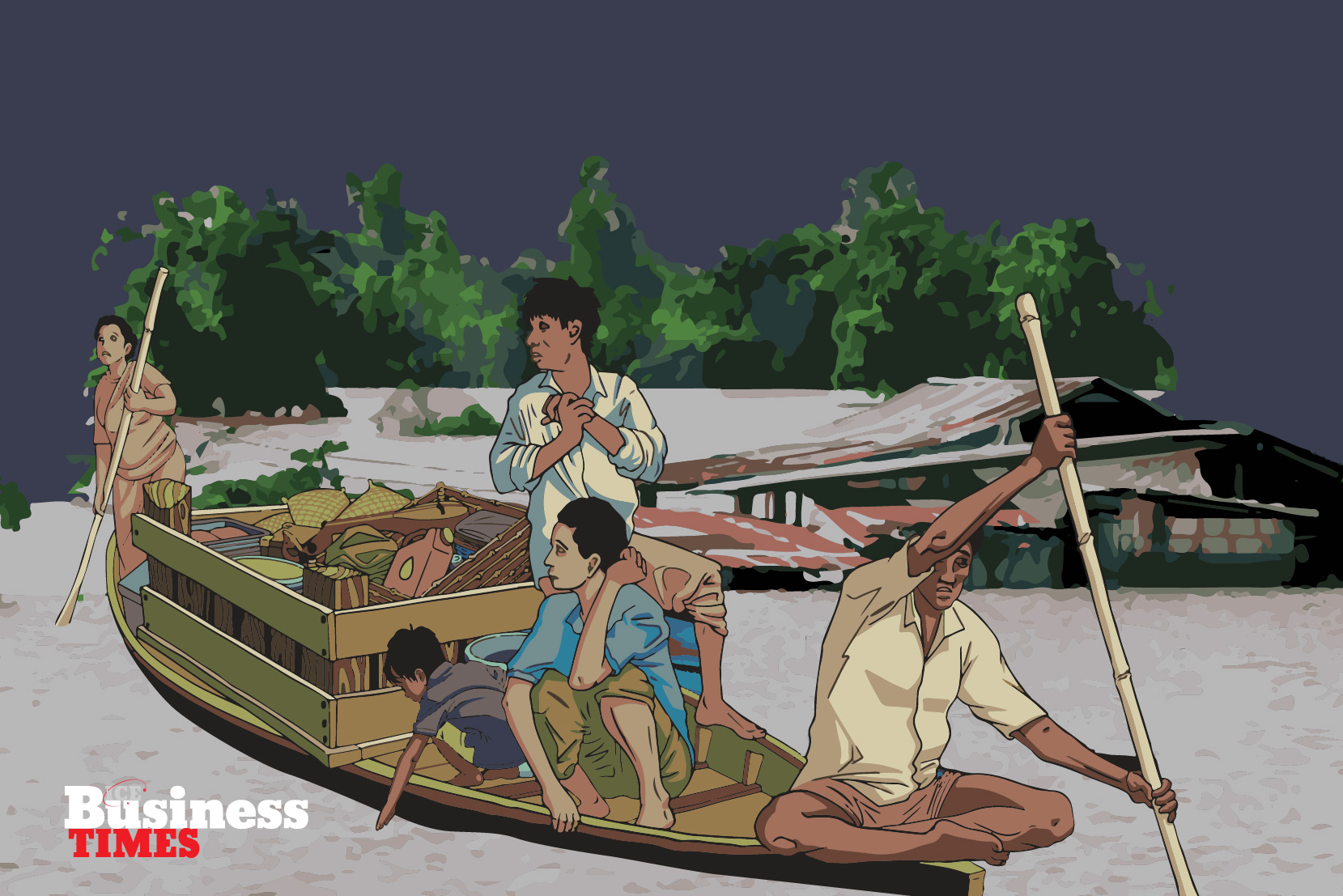As Bangladesh marks the 50th year of its independence, we are recognised worldwide as a development miracle. From being categorised as a ‘test case of development’ to being recognised as one of the fastest-growing economies globally, we are reaping the benefits of robust economic growth over the past decades. Bangladesh met all three eligibility criteria for graduation (i.e., national income per capita, human assets index, and economic and environmental vulnerability index) from the United Nations’ list of Least Developed Countries (LDCs) in early 2018. Our graduation from the LDC (s) list is a strong indication that we have achieved a certain level of development, and the sustainability of our growth process has been vital to ensure eligibility for graduation. However, the new dynamics of our economy poses another significant challenge. Bangladesh now faces the risk of falling into a middle-income trap.
WHAT IS THE MIDDLE-INCOME TRAP?
The term “middle-income trap” (MIT) refers to countries with rapid growth and their swiftly acquired middle-income status that later fails to break through that income barrier and catch up to developed countries. The story of MIT is one of stagnation. As a result, reform stagnation is also a feature of MIT. In a 2007 World Bank study titled “An East Asian Renaissance: Ideas for Economic Growth,” MIT was recognised. According to the report, medium-income countries have lower growth tendencies than affluent and developing countries.
Many developing countries in the history of socio-economic development have failed to maintain their growth pace after graduating from LDCs to Middle-Income Countries (MIC). India, for example, has been a low-middle-income country for 13 years, Malaysia 27 years, Vietnam 11 years, the Philippines 34 years, and Argentina and Brazil 33 years. As a result, they get stuck in the Middle-Income Trap (MIT) for a long time. Since several emerging countries have failed to maintain their previous growth momentum after graduating to the rank of a middle-income country, the Middle-Income Trap (MIT) has garnered a lot of attention in recent years.

A SUSTAINABILITY ISSUE
Economists have expressed concern about the premature deindustrialization of developing economies. As a growing service sector bypasses the manufacturing sector, with industrialisation is left with a relatively small share of GDP, around 20% or even lower. Such a transition path could further distort the long-term structural adjustment process, causing economic stagnation and prolonged growth. Growth slowdowns are primarily regarded as primarily productivity slowdowns.
Indeed, some growth models suggest that low productivity equilibrium in middle-income countries is characterised by common shares of highly skilled workers engaged in highly skilled activities. Many countries also fail to implement active policies that encourage firms to shift their resources from protected domestic to globally competitive export sectors and upgrade workers’ skills in those sectors.
The process of economic transformation entails an increase in the productivity of available resources, with the transition to middle-income status generally characterised by the movement of resources between activities. The transition to high-income status results in a levelling out of productivity across firms within sectors. In return, it leads to further resource reallocation, with most productivity growth occurring in specific sectors. There is no automated impetus propelled by time in the growth process. Empirical evidence shows that growth performances of countries around the world, on average, show that they stay in a specific income group for long periods; however, some may regress from a lower middle-income country to a low-income country if the required level of growth momentum is not maintained.
Many developing countries in the history of socio-economic development have failed to maintain their growth pace after graduating from LDCs to Middle-Income Countries (MIC).
DIMINISHING RETURNS
Being middle-income does not make the economic growth trajectory easier to deal with; in fact, it appears to make it more difficult. Various explanations for MIT’s existence and survival shows substantial causality with the country’s inability to move past a specific economic threshold. These arguments include a diminishing return on capital, the exhaustion of cheap labour and imitation gains, poor human capital quality, distorted incentives and resource misallocation, a lack of advanced infrastructure and capital, and insufficient contract enforcement. Furthermore, it is difficult for middle-income countries to transition to the next level because the institutional arrangements that help them achieve middle-income status create vested interests that benefit from the status quo. If these vested interests are not handled carefully. these countries will become trapped and stagnate.
UNDERSTANDING THE IMPLICATIONS
The key problem for many countries looking to achieve high-income status is generating the political will to make needed reforms. Vested interests will strongly oppose any change that threatens their economic power. Meanwhile, shifting comparative advantage resulting from advances in manufacturing technologies further adds to the woes of middle-income countries and increases concerns over wage competitiveness. The new manufacturing technologies have already enabled the sports apparel company Adidas to use 3D technology to re-shore its production from Vietnam to its home country, Germany.
VISION 2041: A CRUCIAL STEP TOWARDS SUSTAINABILITY
Bangladesh continuously improved its economic performance against the Gross National Income (GNI) per capita criterion during the previous decade, owing to strong macroeconomic fundamentals and the promotion of exports and remittances. However, as a newly graduated LMIE (Lower Middle Income Economy), it faces a key issue in ensuring a seamless transition from LMIE to UMIE(Upper Middle Income Economy) and then to HIE (High Income Economy) status by avoiding a potential MIT situation. The Bangladesh Government has adopted Vision 2041 to industrialise the country and achieve high economic status. The plan calls for increased manufacturing capacity and investments in human capital development to improve exports. However, many countries worldwide have been mired in the ‘middle-income trap,’ unable to make the leap towards high-income status. After discovering that only 13 of the 101 rising economies classed as ‘middle income’ in 1960 had proceeded to become affluent countries by 2008, World Bank experts theorised this trap.
Tackling MIT obstacles will necessitate various strategies worldwide. However, some commonalities stand in the way of becoming a high-income country. It’s worth noting that Bangladesh is currently experiencing a demographic dividend, which is expected to cease in 2040. Therefore, Bangladesh must use its youth potential to become a developed country within this time frame.
The middle-income trap is a perplexing situation. However, this does not negate the importance of preparing for the next shift, which Bangladesh must complete, to continue its steady and rapid ascent as an economic powerhouse. We should remember that graduation from LDCs is just like a milestone, but it is not the end of the ultimate destination. Thus, Bangladesh has to overcome the so-called middle-income trap and jobless growth.















